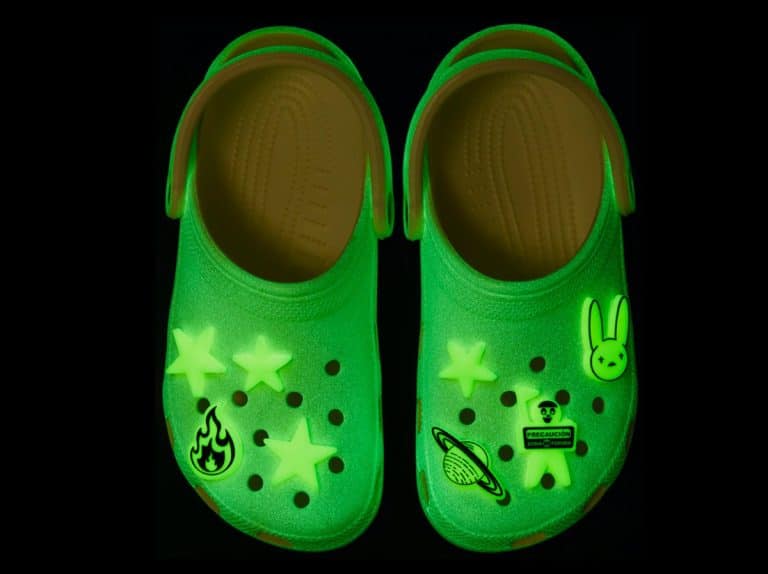Bad Bunny launches glow-in-the-dark Crocs sandals

Does anyone remember that time KFC collaborated with Crocs on some pretty funky platform clogs? The model had what looked like a bucket of fried chicken printed onto it and came with two additional Jibbitz (those charms that are specific to Crocs) made to resemble and smell like fried chicken. When these whacky rubber shoes were released to the public, the internet lost its mind and the model quickly sold out. Well, get ready to go through the same process because Puerto Rican singer, rapper, and songwriter Bad Bunny has just revealed he’s teamed up with Crocs too on a pair of glow-in-the-dark clogs.
The shoes are a reference to Bad Bunny’s hit album YHLQMDLG. Because we’re talking of a pair of Crocs, they’ve obviously been embellished with Jibbitz charms that reference the rapper’s music, like a fire emoji, a planet, some stars and the singer’s signature bunny logo.
Speaking to Hypebeast, Crocs’ head of global marketing Heidie Cooley mentioned the clogs will “stand out during the day and excite at night with an eye-catching, glow-in-the-dark twist.” The sandals will also come with a tiny yellow enamel detail at the lower ankle, contrasted against its white uppers to finish off its “crisp design.”
Only three weeks ago, Crocs revealed its third collaboration with Los Angeles streetwear brand PLEASURES, which was also in partnership with Mississippi outdoor lifestyle brand Mossy Oak. The pair of clogs utilised Mossy Oak’s signature camouflage in orange on the exterior and featured a black sherpa lining, a two-way adjustable strap and a reinforced bottom tread. To finish off the collaboration, PLEASURES Jibbitz and matching back bumper were added.
Crocs has a history of collaborating with trendy brands and artists from Balenciaga, BEAMS and Christopher Kane to Post Malone, Alife and Chinatown Market. With the rise of the dad trainers and ugly shoes trend, it looks like the brand of what has previously been described as ‘the ugliest shoes ever’ is bound to stay around for a while.
Bad Bunny and Crocs’ clogs will be available on Crocs’ website from today at 12 p.m. (EDT) for $60. With the upcoming National Croc Day on 23 October—yes, there is an official Croc celebration—I have one question left for you: are you ready to rock your Crocs this winter? After all, 2020 can’t get any worse…





